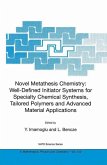The field of transition metal catalysis has experienced incredible growth during the past decade. The reasons for this are obvious when one considers the world's energy problems and the need for new and less energy demanding syntheses of important chemicals. Heterogeneous catalysis has played a major industrial role; however, such reactions are generally not selective and are exceedingly difficult to study. Homogeneous catalysis suffers from on-site engineering difficulties; however, such reactions usually provide the desired selectivity. For example, Monsanto's synthesis of optically-active amino acids employs a chiral homogeneous rhodium diphosphine catalyst. Industrial uses of homogeneous catalyst systems are increasing. It is not by accident that many homogeneous catalysts contain tertiary phosphine ligands. These ligands possess the correct steric and electronic properties that are necessary for catalytic reactivity and selectivity. This point will be emphasized throughout the book. Thus the stage is set for a comprehensive be treatment of the many ways in which phosphine catalyst systems can designed, synthesized, and studied.








